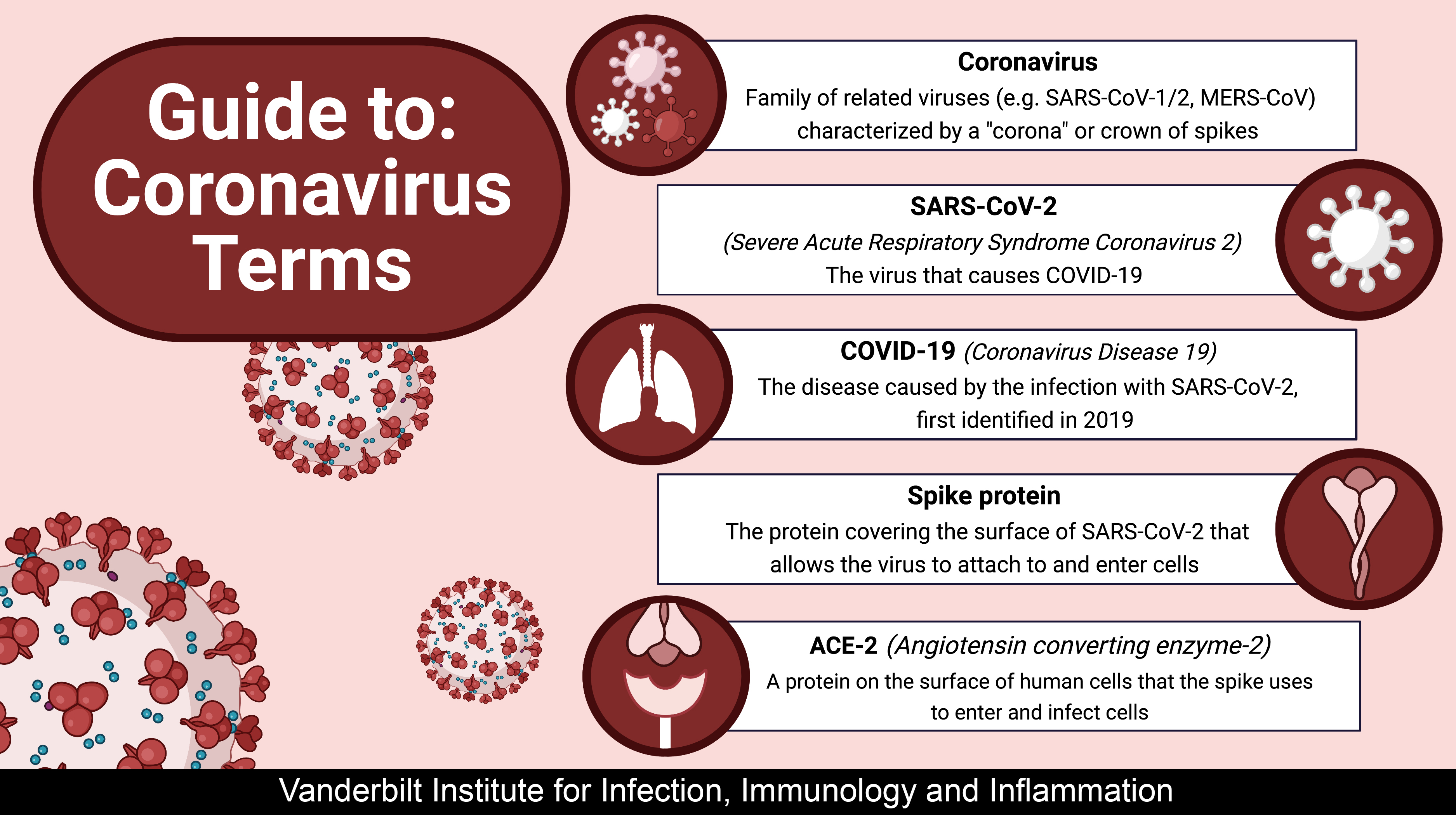
To share on Twitter, click the button below or credit @VI4research!
Sharing elsewhere? Credit this page.
Click here for a printer friendly version!
Guide to: Coronavirus Terms
Coronavirus, SARS-CoV-2, and COVID-19
Coronavirus terminology can be confusing. You may see the terms SARS-CoV-2, COVID-19, and coronavirus used interchangeably, but these words don't mean the same thing. Coronavirus refers to an entire family of viruses. They were named coronaviruses because, under a microscope, protrusions on the virus surface resemble a crown (or corona). Many coronaviruses cause mild, cold-like symptoms, and we may have been infected with them before unknowingly. In contrast, other coronaviruses – like SARS (Severe Acute Respiratory Syndrome) and MERS (Middle East Respiratory Syndrome) that emerged in 2002 and 2012, respectively – cause severe respiratory disease. The novel coronavirus that began circulating in Wuhan, China in 2019, was the most genetically related to SARS; thus, it was named SARS-CoV-2 (and SARS became SARS-CoV-1). COVID-19 (Coronavirus Disease 19) refers to the disease caused by infection with SARS-CoV-2, similar to how HIV (human immunodeficiency virus) refers to the virus and AIDS (acquired immunodeficiency syndrome) refers to the disease.
Spike protein and ACE-2
The 'corona' that surrounds the virus is made of proteins that project from the surface, resembling spikes, hence spike protein. Since the spike protein sits on the virus's exterior, it is the portion of the virus that your immune system can see and the part that allows the virus to attach to and enter your cells. Most of the vaccines in development focus on the spike protein because it is on the virus exterior, and – by itself – it is harmless. Thus, it serves as a great training tool for the immune system. If the virus infects you after vaccination, your cells will remember seeing the spike protein before and quickly mount a defense to protect you. The immune system can fight against the virus by preventing it from binding to your cells. When you inhale the virus, spike protein will latch onto cells by directly binding to ACE-2 (Angiotensin-converting enzyme-2) and exploiting these cellular proteins to gain entry.
____________
Interesting fact: The main reason we find ourselves in a pandemic now but not in 2002 when SARS-CoV-1 emerged is because SARS-CoV-2 is much more infectious. Scientists found out that SARS-CoV-2 is better at binding to ACE2 than SARS-CoV-1 – that's why it's better at infecting us and an example of how mutations in viruses work to become more infectious!
Graphics were created using BioRender.